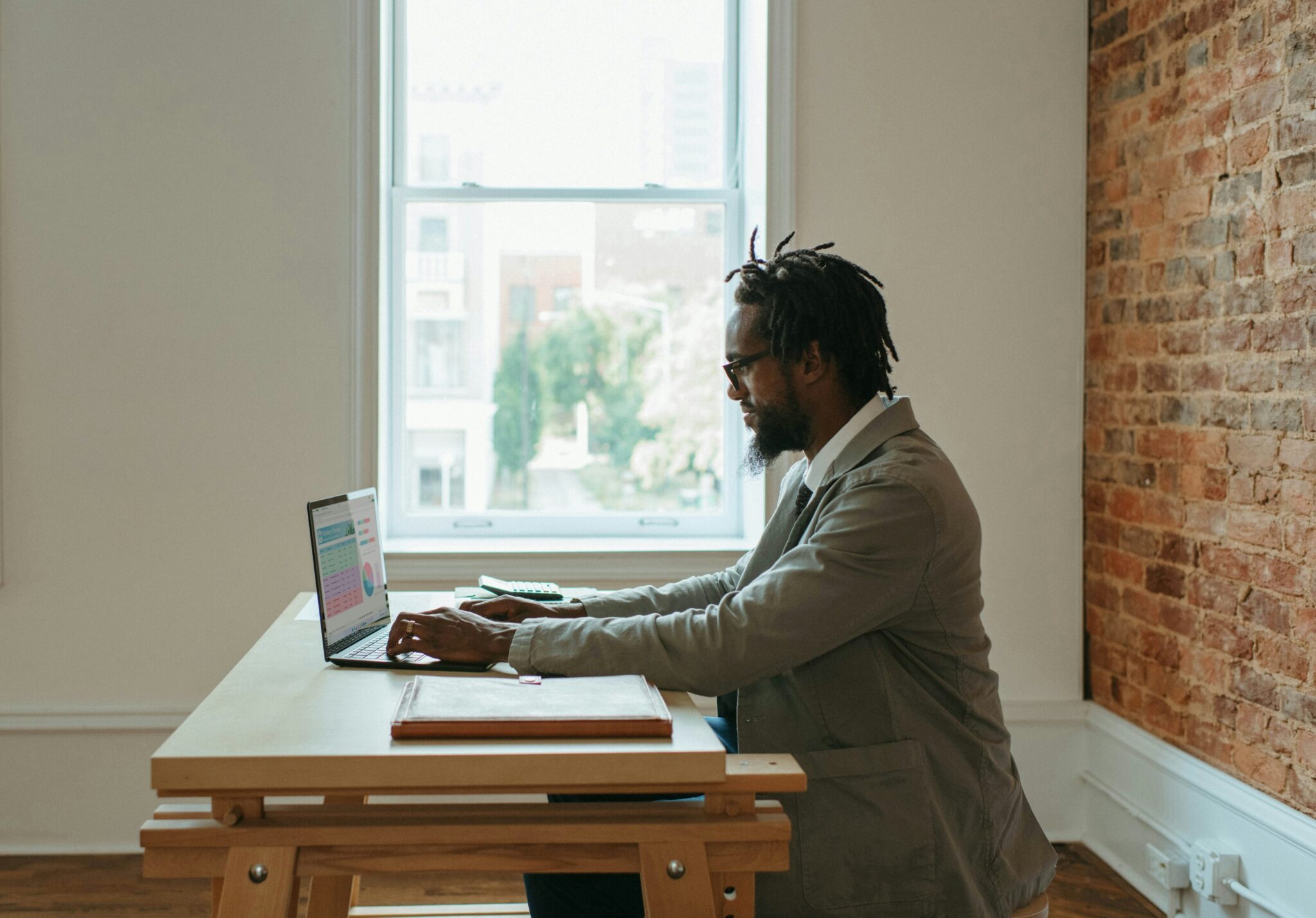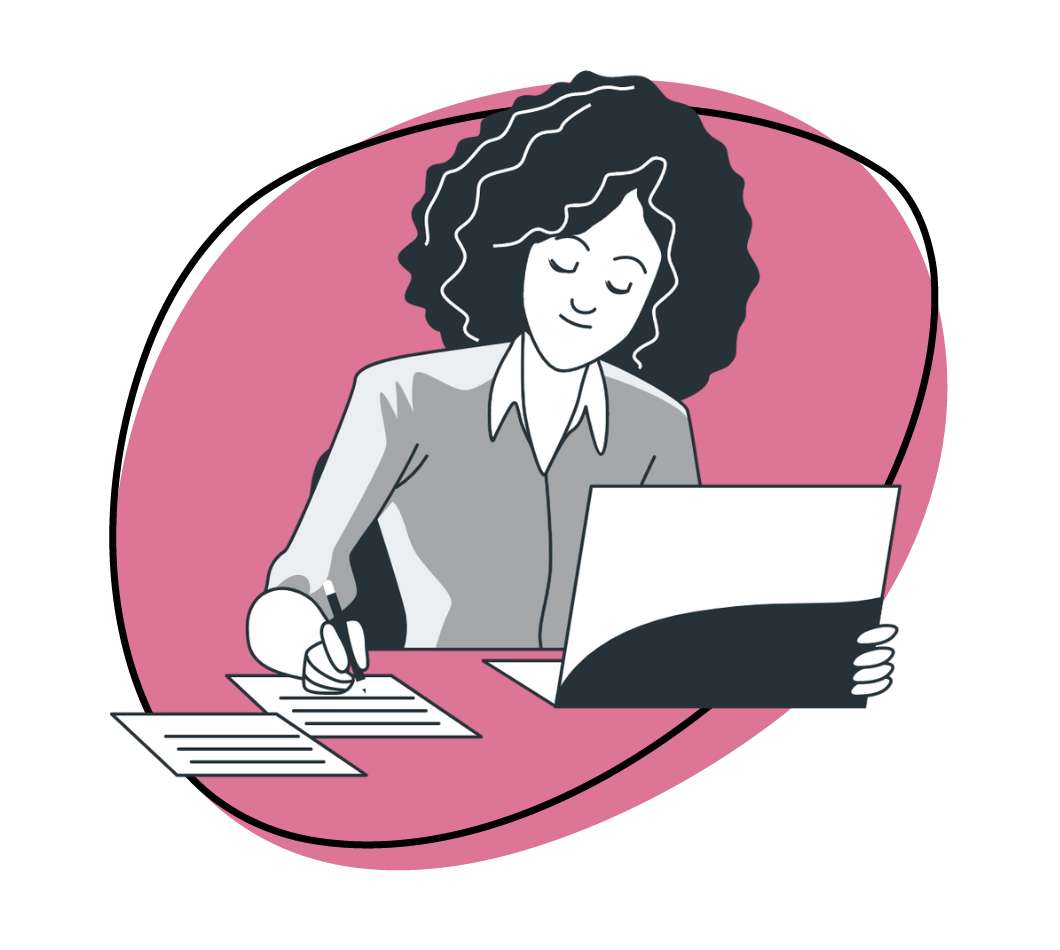Are you among the millions transitioning to work at home in the wake of COVID-19? No commute, no uncomfortable shoes: it sounds wonderful for the first five minutes. Then reality sets in.
How can you be as productive as you were in the office, when you’re staying between the same four walls you slept, ate, and gamed in?
Bringing the laptop to bed with you may work for day one, but in the long term you’re going to want a designated workspace where you can be productive and organized: an at-home mini-environment just to help you stay on task.
A full remodel can end up being expensive though, and the national average for a home office remodel is just over $20,000. If you can spring for it, a designated office with plenty of outlets might be a very nice place to spend the bulk of your time in.
But even if your bank balance is prohibitive and contractors are not working, you can set up a DIY distraction-free workplace that helps you stay on task and productive throughout your working day.
Choose your workspace location in such a way as to minimize visual distractions and keep you on task, but don’t go with dull: you’ll need to keep your spirits up doing the long day working alone.
A sunny upstairs room is usually a better option than a basement, unless you have a special affinity with cold damp walls. Plants and greenery can make your space that much more welcoming, and will make you more productive as well.
Remember, this is a marathon, not a sprint. Take care of yourself and give yourself time to regroup, time to process, and time to catch up with friends or workmates.
Remote work can be lonely at first, so it’s important to find some helpful ways to help you work through loneliness and find connection.

Goodbye, Noise Pollution: Eliminating Audio Distractions
It’s not only visual distractions that make it difficult to work at home– noise pollution can be even worse. If you live alone you may have nothing to worry about, but if you’re quarantined with other people, your house may often descend into a cacophonous chaos.
There are different ways to successfully work from home with other people around, but there will always be unexpected interruptions and sounds. Whether you’ve got children or noisy housemates, soundproofing your work area should be one of your first priorities.
Seal Any Openings Sound Can Sneak Through
If a door separates your office from the rest of the house, adding weather-stripping or a door sweep along the bottom of the door can cut down on the amount of sound pollution that seeps in.
Solid wood blocks sound much more effectively than hollow core doors, so if you hear that hollow sound when you rap on it, you may want to exchange it for a heavier one.
When you’ve done that, look for holes in the wall — for instance, where electric cables enter the room– and seal them. Pieces of foam weather stripping work well here too, and you can place them around wires. If you find holes without any clear purpose that don’t have any wires, seal them completely.
Add Padding To Soften External Noise
A thick carpet over a layer of soundproof padding can decrease sound coming from a lower level, as well as muffle your own footsteps and diminish echoes. If your workspace is downstairs and it’s the footsteps upstairs that bother you, install carpet and padding there.
Certain types of soundproof padding—mass load vinyl (MLV), for instance—work under tile, wood, or laminate flooring, but they do require extra effort in installation.
If you find that the noise levels are still problematic after you’ve taken those steps, you may want to consider installing a layer of acoustic board. This is a fairly major undertaking, and you may end up needing to move electric boxes and reinstall baseboards as you glue a layer of acoustic board in place and then add another layer of drywall.
The results, though, can’t be beat. You won’t even know if your housemates are having a loud party in the living room.
Quick And Effective Ways To Eliminate Distracting Noises
If you need the quiet but can’t install acoustic boards, soundproofing blankets are a good alternative. These thick blankets are manufactured from sound absorbing materials, and you can tack them to the walls, nail them in place, or hang them from curtain rods. They’re not always the prettiest option, but they get the job done.
Sometimes you can’t seal off your office. You might not have a separate room you can claim as your own workspace, and be stuck with working at the dining room table or in a corner of the living room.
There’s nothing wrong with improvising, and your office is wherever you choose to work. But invest in some quality noise-canceling earphones and don’t be afraid to use them when you need to concentrate.

Office Ergonomics: Keeping Comfortable and Avoiding Burnout
Those of you who have tried doing a 9-5 work day seated at a wooden dining room chair know why this one is important. It hurts.
Dining room chairs are designed for 30 minutes of consecutive use, max. You need something better for your home office.
A Comfortable Chair Can Make A World Of Difference
You may enjoy working from a cozy armchair on occasion, but for long stints of concentrated work, a good office chair can’t be beat.
An adjustable chair will enable you to set your ideal height and maintain good posture throughout the workday. No one’s watching to see whether you’re sitting up or slumping, but your back will let you know if there’s been any cop-out.
Treating yourself to a good chair is a good first step toward avoiding burnout, but there’s more you need to do.
Taking Breaks Can Keep You Comfortable Throughout The Day
Schedule regular breaks in to get up and walk around, or even do a three-minute cardio routine.
Make a habit of looking away from the computer and focusing on something in the distance every twenty minutes. For more tips on how to avoid burnout, have a look at this complete guide to job burnout.
No Mad Paper Hunts: Maximizing Your Storage
A disordered office may be a sign of a creative mind, but it’s also a major roadblock to productivity. Keep your workspace tidy and maximize storage, both physical and digital.
A few minutes every morning spent organizing your desk—and then three more organizing your computer files—can gain you hours in productivity.

Find An Organization System That Works For You
File cabinets may seem old school, but if your work involves dealing with quantities of physical paper, they are still worthwhile. You can also get a more bare bones filing system that fits on your desk.
Have a designated place for incoming mail or work on the to-do list, another for projects in process, and a third storage area for completed projects or paid bills.
You may want to organize your computer files in a similar way, keeping upcoming work and work in progress in a designated area—your desktop, perhaps—and finished projects stowed away in the filesystem.
Save early and save often, and do regular backups to the cloud. It always works until it doesn’t, and you don’t want to lose hundreds of dollars worth of work just because your computer crashed. Investing in reliable backup solutions ensures that your data is safe and can be quickly restored in case of any unforeseen issues.
Use Technology to Streamline Your Workflow
Working at home forces you to use technology throughout the day, as you field requests, communicate with your coworkers, and attend virtual meetings. Choosing your remote working tools carefully can minimize frustration and enable even boring work meetings to be engaging, informative, and fun.
Tools Can Help You Simulate An Office Environment
If you’re used to working in a busy office you may miss being able to pull a coworker over to show them what’s on your screen. It’s hard to explain what’s going on at your end without the visuals.
That’s where Cloudapp comes in: an easy to use screen recorder app that allows you to beam your computer screen, live, to everyone else on your team.
Prepare Physically And Mentally For Meetings
Prioritize team meetings. Virtual meetings can sometimes be even more draining than the in-person variety, so plan accordingly: schedule yourself a ten-minute break before and after any meetings, and have a granola bar and your favorite pick-me-up drink ready in case you need to recharge halfway through.
Remember, everyone else is in the same boat you are. Be patient as your team members work through their own technical difficulties, and be ready to help walk them through using the tools you found helpful to accelerate your own workflow. Remember, we’re all transitioning together.
Bonus Tips for Creating a Distraction-Free Work Environment:
- Natural Light Boost: While selecting your workspace, prioritize areas with ample natural light. Not only does it boost your mood, but it also helps maintain a healthy circadian rhythm, enhancing productivity and focus.
- Personalize Your Space: Inject some personality into your workspace with meaningful decorations or artwork. A touch of personalization can make your environment feel more comfortable and inspiring.
- Scent Your Workspace: Consider using essential oils or scented candles to create a pleasant and calming atmosphere. Scents like lavender, citrus, or peppermint can help reduce stress and increase focus.
- Invest in Ergonomic Accessories: In addition to a comfortable chair, consider investing in ergonomic accessories like a keyboard tray, monitor stand, or wrist rest. Proper ergonomic setup can prevent discomfort and fatigue during long work sessions.
- Create a Ritual: Establishing a pre-work ritual can help signal your brain that it’s time to focus. Whether it’s brewing a cup of coffee, stretching, or listening to energizing music, having a consistent routine can improve your mental readiness for work.
- Implement the Pomodoro Technique: Break your workday into intervals with short breaks using the Pomodoro Technique. Work for 25 minutes, then take a 5-minute break. After four cycles, take a longer break. This method can help maintain focus and prevent burnout.
- Set Boundaries: Communicate with household members about your work hours and the importance of minimizing interruptions during those times. Establishing clear boundaries can help create a more conducive work environment.
- Digital Detox: Minimize digital distractions by using apps or browser extensions that block distracting websites or notifications during work hours. Creating designated times for checking email and social media can also help maintain focus.
- Incorporate Background Music or White Noise: Experiment with background music or white noise to drown out distracting sounds and create a more conducive work environment. Websites like Coffitivity offer ambient sounds that mimic a bustling café or a peaceful nature setting.
- Practice Mindfulness: Incorporate mindfulness practices into your daily routine to stay grounded and focused. Short mindfulness exercises or breathing techniques can help reduce stress and improve concentration throughout the day.
By implementing these bonus tips alongside the strategies outlined in the article, you can create a distraction-free work environment that promotes productivity, creativity, and overall well-being.
Your Workspace, Your Way
If you can’t take enough time out to work on setting up your home office any one day, split it up over several. There’s no race, and no-one will see any temporary messes that may exist—at least, if you are careful to point the webcam the right direction. But the faster it’s done, the sooner you’ll be able to enjoy your own distraction free space.
You’ll be surprised how much your productivity increases, and how more rested you are at the end of a long work day.












